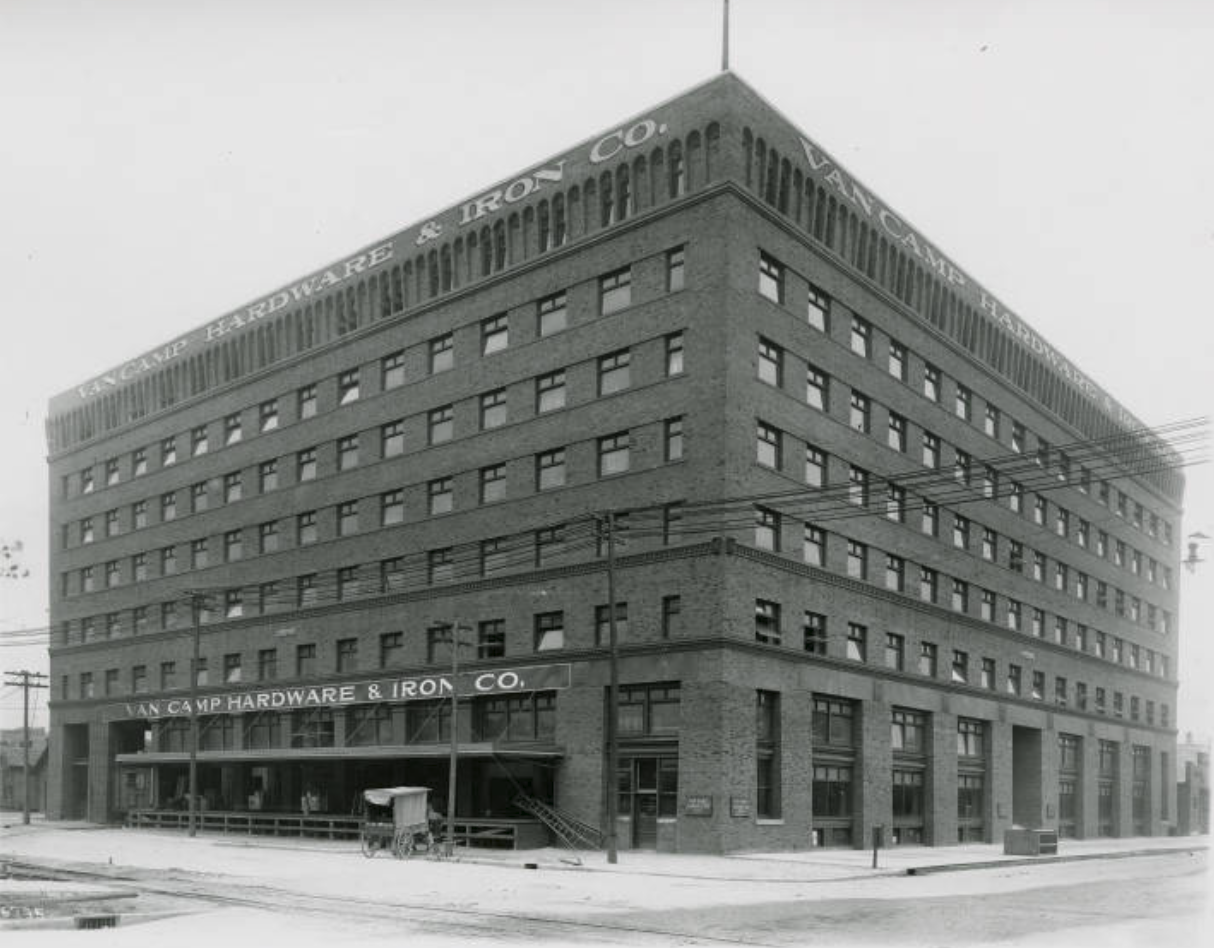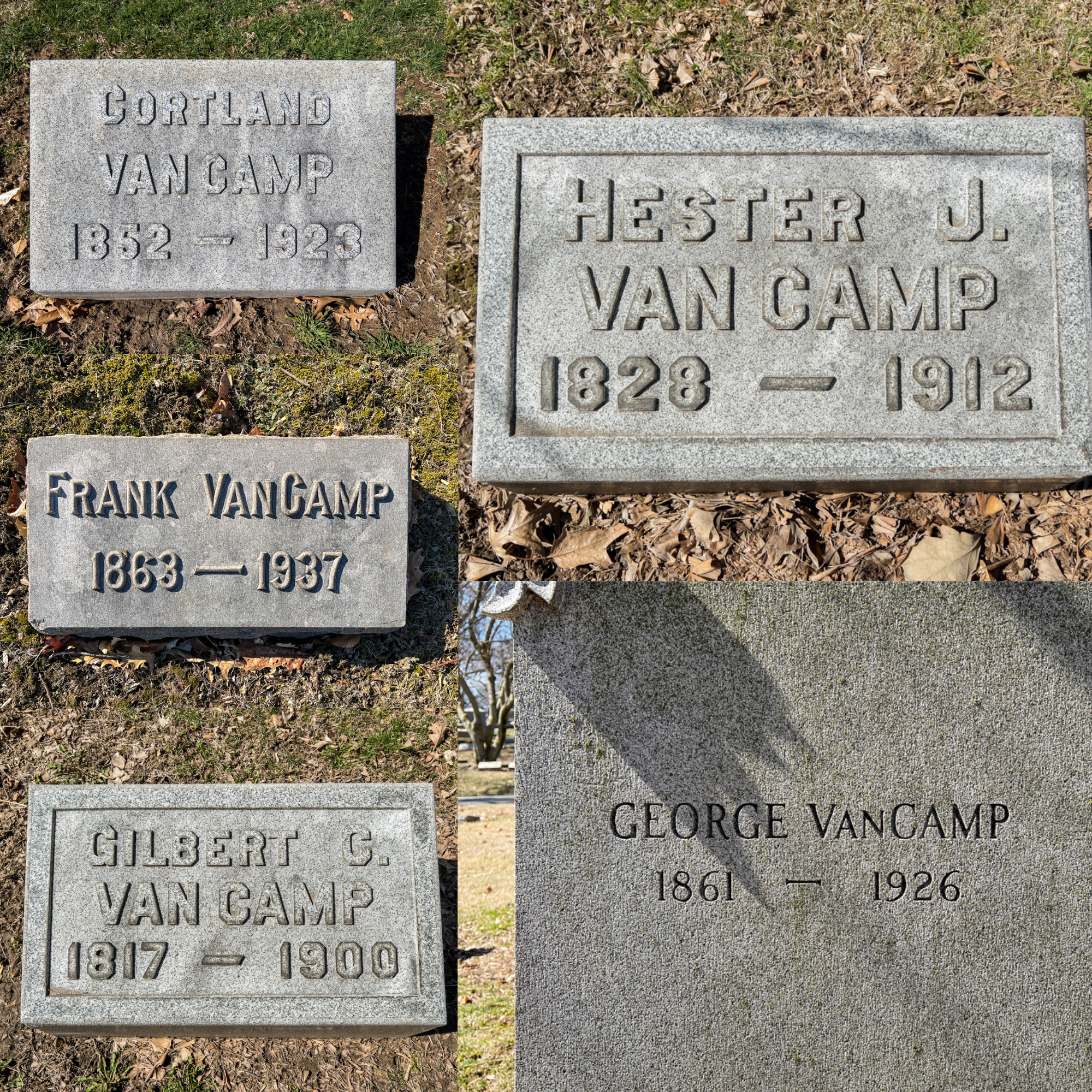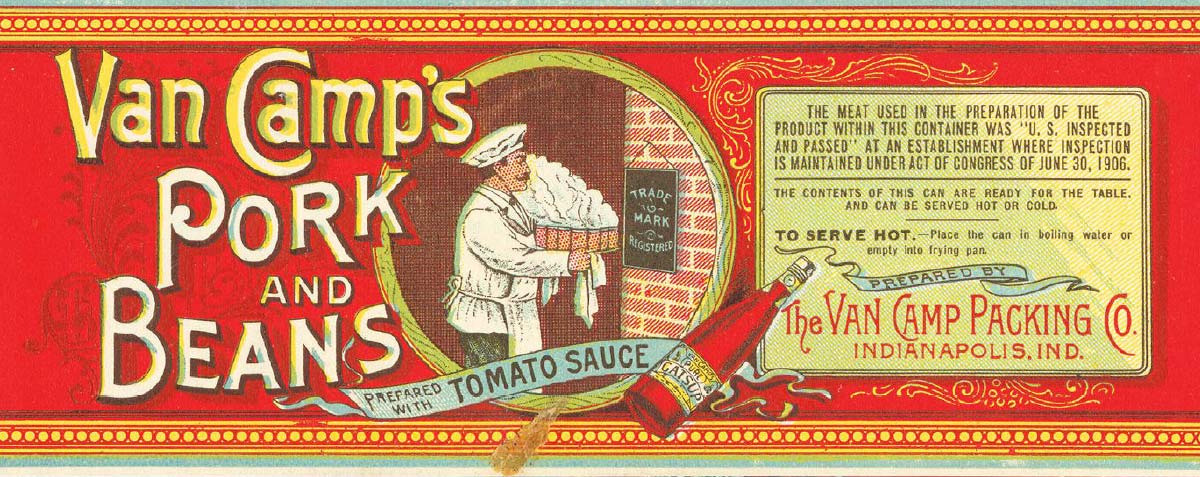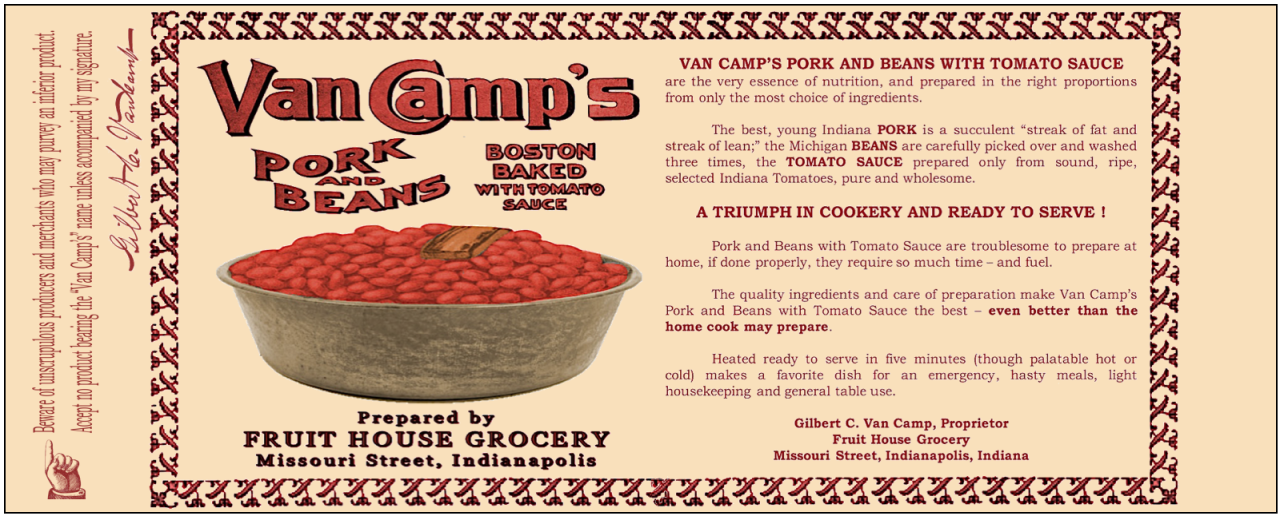The Van Camp Family
Gilbert Van Camp
(December 25, 1817 – April 4, 1900)
Cortland Van Camp (son)
(May 25, 1852 – August 7, 1923)
George Van Camp (son)
(1861 – January 29, 1926)
Frank Van Camp (son)
(January 21, 1863 – November 11, 1937)
Gilbert Van Camp was born on Christmas Day, 1817, in Brookville, IN, where he worked on his father’s farm until he left home at age 17 to work at a flour mill as a miller’s apprentice. At age 21, he entered a partnership in a tin smithing business, learned the trade, and specialized in selling stoves and tinware with his partner. He married Hester Raymond in 1849, and in 1853, his growing family moved to Greensburg, IN, where he opened his own store. In 1860, with financial backing from Calvin Fletcher, his family moved to Indianapolis to start a new business with fruit farmer Martin Williams.
 Fletcher was an important pioneer and businessman in Indianapolis and was instrumental in the formation of Crown Hill Cemetery in 1863. Martin Williams’ 154-acre farm included the large hill that later became known as Crown Hill, or The Crown. (Williams sold his farm on Oct. 13, 1863, and it became a big part of Crown Hill Cemetery.) Following Fletcher’s plan, Van Camp and Williams designed and built what became the nation’s first successful commercial cold storage warehouse for perishable foods. Located on Ohio Street, the building had three-foot thick walls filled with straw and was both lined with and enclosed in sheet iron.
Fletcher was an important pioneer and businessman in Indianapolis and was instrumental in the formation of Crown Hill Cemetery in 1863. Martin Williams’ 154-acre farm included the large hill that later became known as Crown Hill, or The Crown. (Williams sold his farm on Oct. 13, 1863, and it became a big part of Crown Hill Cemetery.) Following Fletcher’s plan, Van Camp and Williams designed and built what became the nation’s first successful commercial cold storage warehouse for perishable foods. Located on Ohio Street, the building had three-foot thick walls filled with straw and was both lined with and enclosed in sheet iron.

Gilbert established a business to can and sell fruit, with much of it coming from Williams’ large fruit farm. Gilbert’s wife Hester processed the fruit and Gilbert used his tin smithing skills to make quart and six-gallon canisters as well as the pots used for cooking. Eventually they moved the canning from their home to a retail space named the “Fruit House,” later known as the “Fruit House Grocery.”
Van Camp’s canning business was helped greatly when it obtained its first major contract selling provisions to the Union Army and it grew over the next several decades. By 1882, the G. C. Van Camp & Son Packing Company (incorporated 1875) was producing eight million cans of pork and beans a year from its factory in the 300 block of Kentucky Avenue. In 1890, Van Camp began a series of full-page advertisements in national magazines, pricing his product at six cents per can. By then, the Van Camp family had at least three thriving businesses. The G. C. Van Camp & Son Packing Company listed Gilbert as President and his youngest son Frank as Secretary-Treasurer. They were also the officers of the Van Camp Preserving Company with fruit, butters, and preserves as its products. The third company, Van Camp Hardware and Iron Co., was started in 1876 by his eldest son Cortland, who sold blacksmith and tinsmith supplies, hardware, guns, and woodwork for carriages and wagons. It became the largest hardware firm in the state, with a huge eight-story building and 2,000-page catalog. By the 1950s, the store stocked 80,000 items for sale. Much later, the Van Camp’s middle son, George, who had been involved in the other family businesses, started the George Van Camp and Sons Packing Company in Westfield, IN in 1914.


On October 4, 1891, the canning plant suffered a devastating fire. It was rebuilt and its success was later aided by the marketing of a product that was a hit with the public — Pork and Beans with Tomato Sauce. It’s disputed where the famous recipe with tomato sauce originated; some accounts credit an old family recipe of Hester’s and other sources give the credit to Frank. Legend has it that one day a load of baked beans arrived at the factory in 1894 to be reprocessed. Frank tried to eat some for lunch, but they were so dry that he opened a bottle of Van Camp’s catsup and poured it on the beans. The result was so tasty that, with a few modifications, they added Van Camp’s Pork and Beans with Tomato Sauce to their product line. It became the firm’s most successful product, opening an international market and spawning many imitators. A December 1896 news account says Van Camp’s outsold the next six competitors combined.



